Climbing roses add a romantic, elegant touch to gardens. Their long stems attach (with a little help) to walls, pergolas, trellises and produce cascades of flowers that delight the eye and sometimes the nose with their heady scents. But to succeed in planting a climbing rose and give it the best chance to thrive, you must first prepare the ground properly. Discover our tips to succeed in planting your climbing rose.
When to plant a climbing rose?
Best time to plant a climbing rose is in autumn (October to November) or in early spring (March–April). Planting in autumn gives roots time to establish before winter, which gives your rose a head start in spring.
Note: bare-root roses can also be planted throughout winter, provided there are no frosts at the time of planting and during the following 4–5 days. You should also apply mulch around the plant to protect roots from cold.
Prepare the soil and the location
1. Choose the right location
A climbing rose needs plenty of light to perform at its best. Choose a sunny spot where it can enjoy 6 to 8 hours of sun a day. Good exposure encourages abundant flowering and also helps prevent some diseases.
Plant your rose against a solid support (wall, trellis, pergola or fence), as it will need something to climb on.
2. Prepare the soil
Roses are greedy! To get off to a good start they need nutrient-rich soil. Before planting, dig a hole about 50 cm deep and wide. This size of hole helps to loosen the soil and makes rooting easier.
Then mix compost or well-rotted manure with the excavated soil. This enriches the soil and gives your rose a good boost. Compost also helps retain moisture while ensuring adequate drainage. If your soil is very clayey, add more compost and potting soil to lighten it, plus a little gravel or sand (river or quarry sand) to prevent waterlogging.
Tip: Remove unwanted weeds that could compete with your rose and break up large clods of soil.
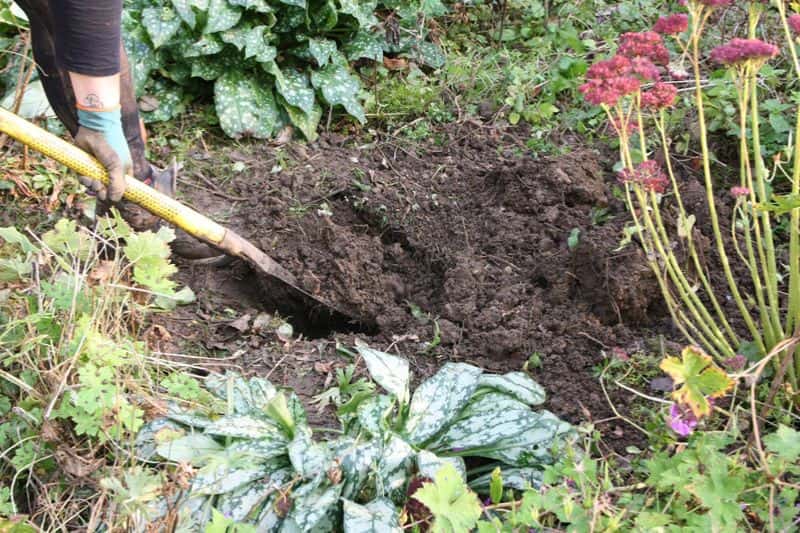
Planting step by step
1- Dig a hole large enough (generally twice the width of the rootball) to accommodate your rose, and enrich the soil as explained above.
2- If planting a bare-root rose, prepare a pralin by mixing garden soil, well-matured compost and a little water to make a thick mud. Dip the roots for an hour in this mixture to coat them. This slurry protects the roots and increases the chances of successful establishment.
If your rose is in a pot, water it well a few hours before planting. This will make removing it from the pot easier and reduce stress on the plant.
3- Place your rose in the hole making sure the graft union (the slightly swollen part where the stems start) is slightly above ground level, ideally 2–3 cm.
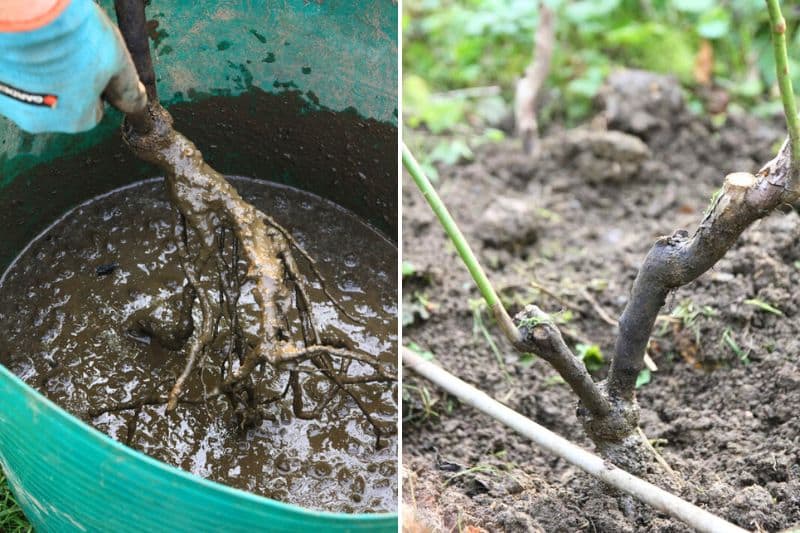
4- Backfill the hole with the soil–compost mix, firm gently and water generously to avoid air pockets around the roots.
5- To keep the soil cool and limit weed growth, apply mulch at the base of your rose. Mulch can be wood chips, straw, leaves or bark. This natural layer retains moisture and protects roots from temperature fluctuations (heat in summer and cold in winter).
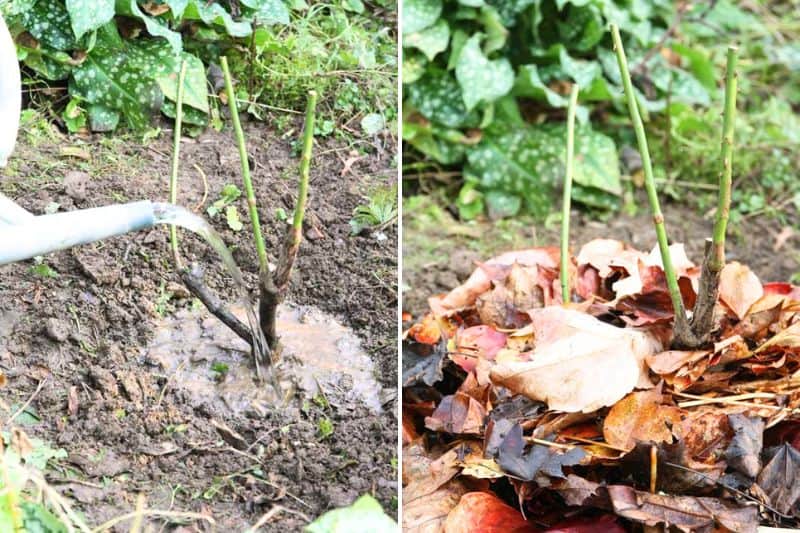
Install the support
Climbing roses do not have tendrils or climbing roots like naturally climbing plants (peas or vines). They therefore need help to climb. Once the rose is planted, install a trellis or tie it to its support.
Secure the main stems to the support with soft plastic or rubber ties to avoid damaging the plant. As it grows, continue to tie in new shoots. To achieve abundant, dense and evenly distributed flowering, try to train branches horizontally or in a fan shape.
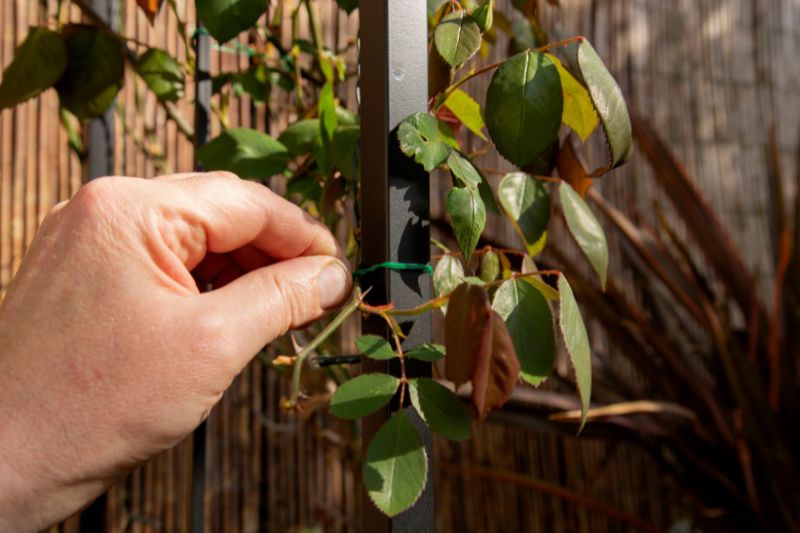
How to water and care for the rose after planting?
- A newly planted rose needs a good supply of water to root well. Water regularly during the first weeks, even the first months, depending on the weather, so roots can establish deeply. In summer, water roughly once a week. After the first year in the garden, the rose will usually manage without watering, except in summer if there is no rain. Water at the base of the plant, avoiding wetting the foliage.
- In spring, apply a rose fertiliser to boost flowering. Take care not to overdo it, as excess nitrogen favours leaves at the expense of flowers. Make a second application in summer, around June–July.
- Prune dead or poorly placed branches to stimulate growth and control the shape of the rose. Pruning is usually done in late winter or early spring. Focus on main stems and prune to create a harmonious form.
- Like all roses, climbing roses can be susceptible to diseases such as black spot, rust or aphids. Don’t panic — there are natural solutions to tackle them! For more, read our articles: "Rose diseases – identification and treatments"; "Roses: aphids and other pests" and "Help, spots on my roses!".
Enjoy your climbing rose!
There you are — your rose is planted and settling in. With a little patience and regular care, it will soon start to climb and offer its first flowers. In the first years, flowering may be modest, but as it grows your rose will gradually cover its support and become a real centrepiece of your garden.
Tip for those in a hurry: a solution for quick flowering
If you’re impatient, choose climbing rose varieties known for quick flowering such as the ‘New Dawn’ or ‘Pierre de Ronsard’. These varieties are known for abundant flowering and robustness, even in challenging conditions. See also all our climbing rose varieties.






























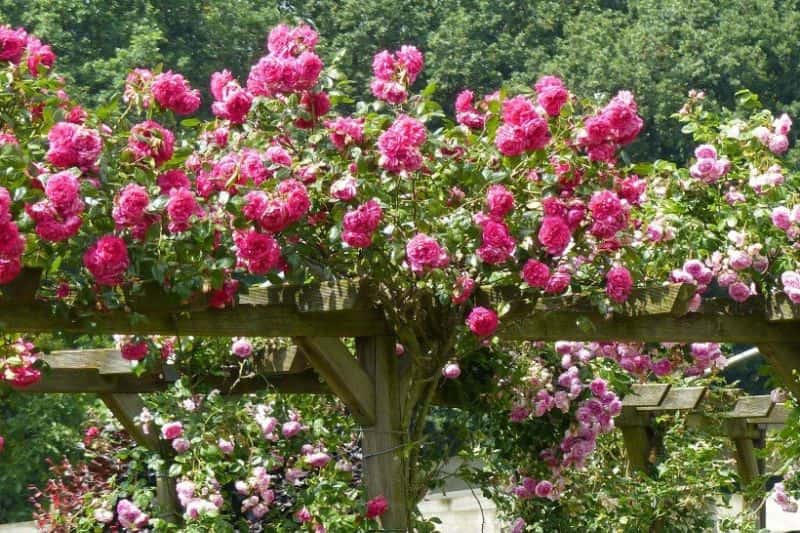
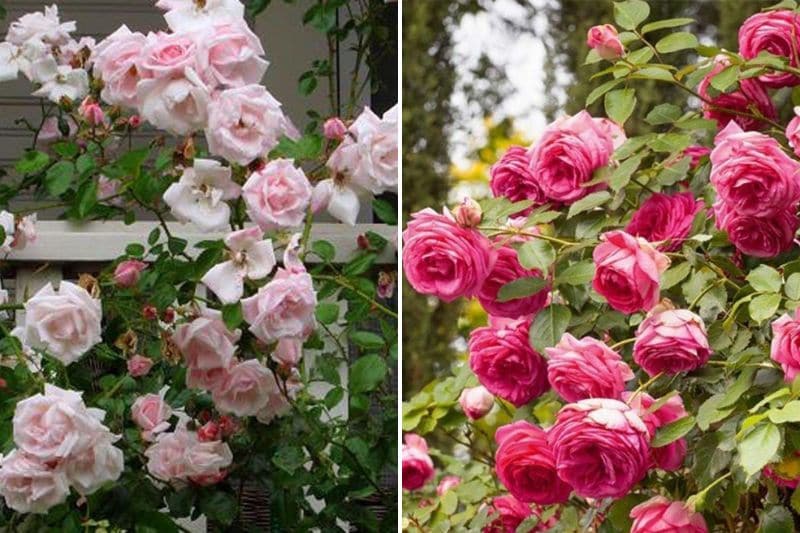


Comments